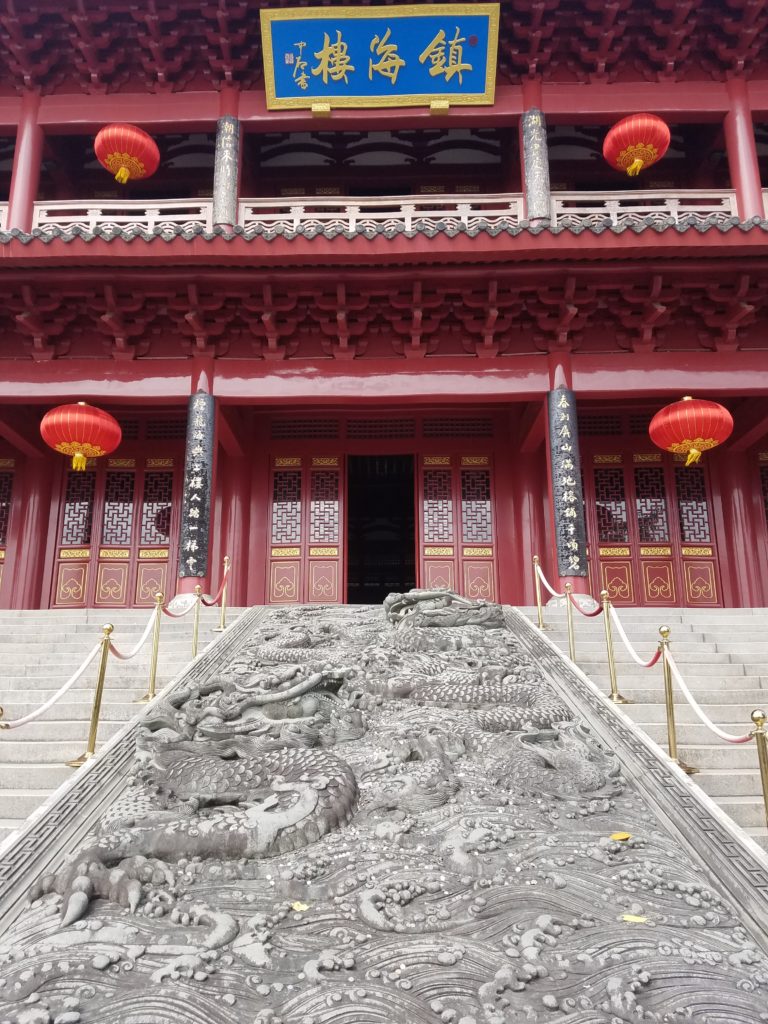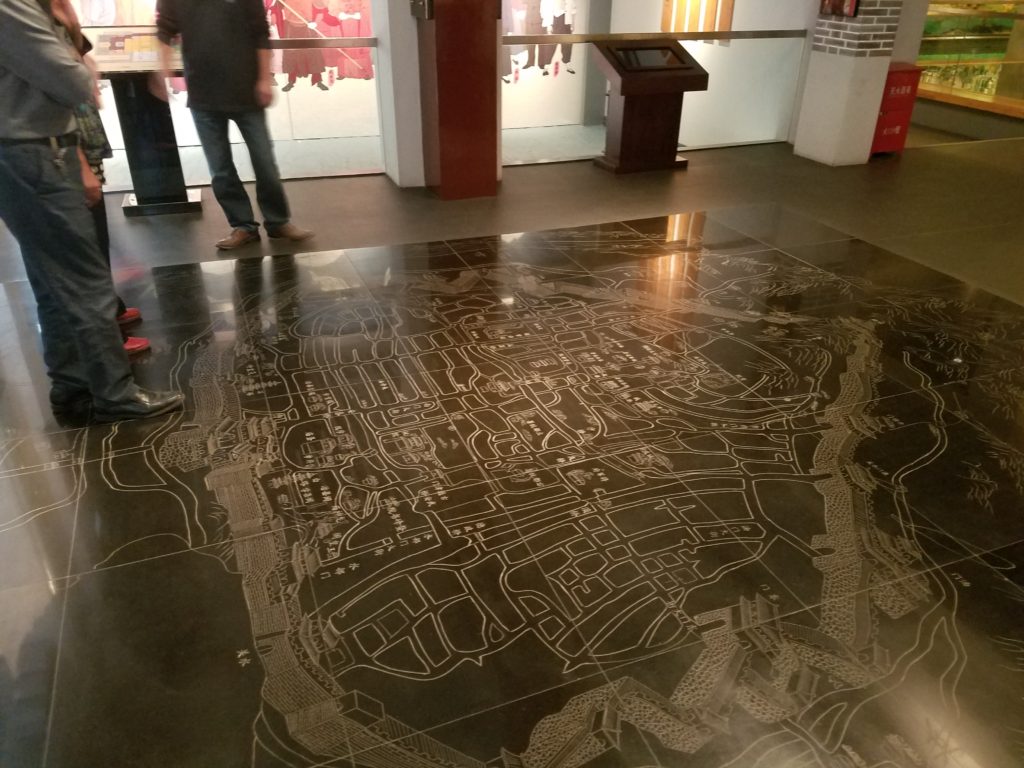I had the opportunity to meet up with one of my Chinese professors from Pomona last week. He had spent the first few months of his sabbatical in China teaching various courses, and now he had come to Fuzhou to visit friends.
Our day began at the West Lake Hotel where he was staying, and after two of his acquaintances arrived, we went to visit Pingshan to stroll through the garden there. It was a beautiful modern Chinese garden with some Suzhou influences, but also meant to be a general public space. It was newly renovated and featured a variety of trails that led up to Zhenhai lou (literally, the Tower which Suppresses the Sea).

The building was originally built on Pingshan, the northern tip of Fuzhou’s three mountains, as a geomantic site to divert calamities from the ocean (in other words, typhoons). Whether or not that was successful, the tower was demolished during the Cultural Revolution, but has since been recently restored. According to Prof. Lin, one of our guides, Fuzhou hasn’t had a major typhoon since the restoration, and there are a variety of internet theories on why the tower actually works.
Prof. Chen, our other friend, shook his head at the claim, saying that there hadn’t been major typhoons since he was born—and he had been born decades before the tower was rebuilt.
Nonetheless, it was a grand tower with a spectacular view. The basement of the tower was a rather well-designed exhibit on Fuzhou history. It was much more interesting than the provincial museum, and featured a Qing-dynasty map of the city.
While I hadn’t noticed this on any modern map, the old map revealed that Fuzhou was built with some serious geomancy in mind. Pingshan, where we currently were, marked the northernmost corner of the city and protected it from evil winds. Situated at the foot of the mountain was the temple to the city’s protector. Then, towards the southeast and southwest were two mountains with pagodas on top of each of them as well—almost reminiscent of Toji and Saiji in Kyoto.
Currently, the provincial government offices are headquarted adjacent to Pingshan, and the city’s administration is located near the two southern mountains, with the city center nestled within the triangle formed by the three mountains.
According to Prof. Lin, the city expanded over time, and it wasn’t until the Qing that places like Cangshan (where Fujian Normal University’s old campus is) got incorporated into the city.
As we look around the main tower, we had a conversation that I think would only happen when three Chinese literature professors come together.
“That calligraphy on the building is terrible,” Prof. Chen said.
“Right?” Prof. Lin chimed in. “It looks like it’s going to fly away.”
“Mhm,” Prof. Chen nodded. “Semi-cursive isn’t the right script here. A building of this size needs Yan Zhenliu’s style of standard script.”
“Yup,” said Prof. Lin. “The current calligraphy can’t hold the building down.”
Now, while I could tell that the calligraphy on the building was a bit off, I didn’t have any suggestions on how to improve it. I had thought that perhaps something a bit more formal like clerical script would be a good match. But then again, like Prof. Chen said, standard script—especially a bold one like Yan Zhenliu’s—would be best.
From there, we went off to lunch. Prof. Chen had some errands to run, so he bid us farewell at the restaurant. Lunch was a buffet, and while my Pomona professor and Prof. Lin argued over who’d pay, I was stunned by the selection—especially the desserts.
Now, I know I had a close encounter with pre-diabetes from Pomona’s delicious raspberry-chocolate cake, but I hadn’t indulged myself since graduation, so my body would surely be able to take the hit.
After a few rounds of hot pot and main dishes, I came back with an egg tart, two kinds of cake, and a mango drink. Ah, much better than Oldenborg.
Prof. Lin had a meeting to attend, and so it was me and my former professor for the afternoon. We went to the provincial museum, which was even more disappointing than the first time I went, if that was even possible. Only one exhibit was open, and it was a regular Friday afternoon.
After the disappointing exhibit, we set off to Sanfang Qixiang, Fuzhou’s premiere tourist destination. I enjoy walking around, even if it just means browsing through the same shops over and over again.
This time though, we stumbled across a museum—the former residence of a local official from the Qing. At first, I thought we had been ripped off. It wasn’t particularly interesting at all. In fact, most of the free spaces in the neighborhood looked much nicer than whatever we had paid admission to see.
Then we saw it. A mini Suzhou-style garden built within the walls of the residence. All of my memories from working at the Huntington flooded me as I recalled the points in the Craft of Gardens. It proved to be an interesting space, although, that was before I knew I’d come back the next day and find an even grander space. But I’ll save that for another post.
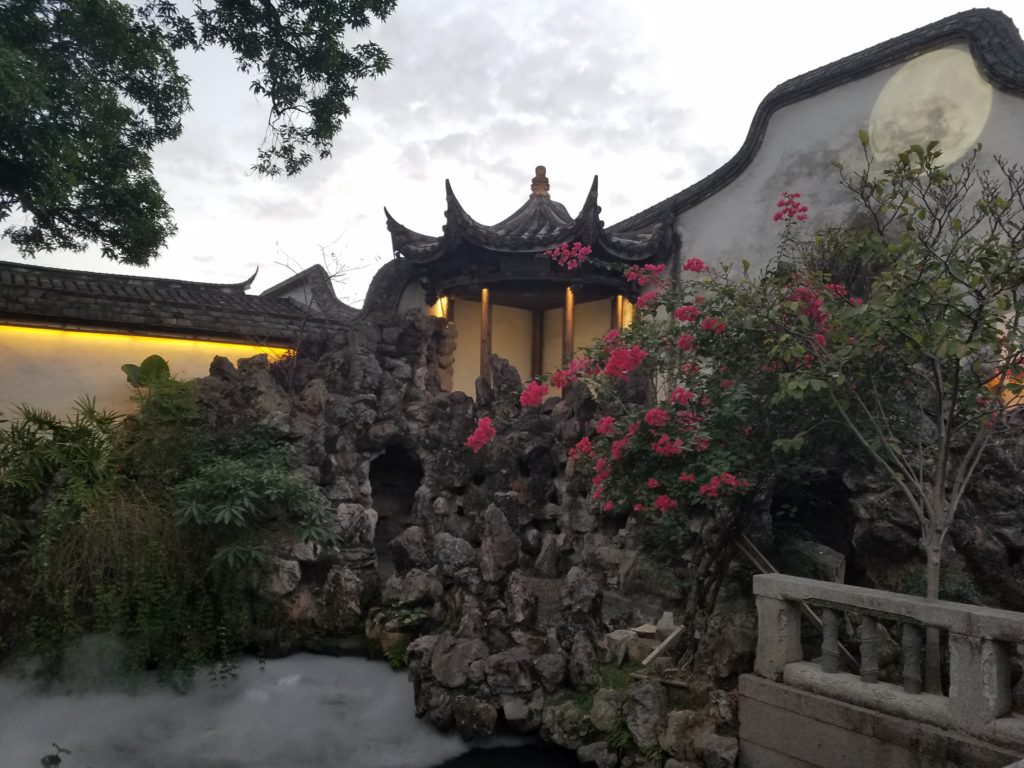
After spending twilight among the gardens, we browsed around the shops a bit more and found a rather peculiar bookstore and overpriced cafe. The books included a variety of languages, as well as translated books. These ranged from fiction in English (Harry Potter and Penguin classics) to translated editions of scholarly works (I found a few books by Timothy Brook, Patricia Ebrey, and other esteemed authors). There was also a really robust section on European art history, philosophy, and my personal favorite: Classical Chinese literature.

But nothing was priced and judging from the coffee prices, it was probably more than whatever I was willing to pay. But they had good wifi, and it was really aesthetic, so hey, I’d come back to browse.
Before dinner, we made two more stops: one at Minjiang University’s lacquer shop, where I eyed a particularly fine plum blossom natsume and a round tray with pine trees painted in gold leaf. (Spoiler: I ended up coming back for the natsume. I do like the tray, but my wallet is still in tears from the natsume…)
After admiring the wonderful handiwork, we eneded up eating dinner at a Japanese restaurant, which provided perhaps the fanciest hisashi soba I’ve ever had. Rather than on a an austere bamboo tray, it was presented to us in a bowl of solid ice.
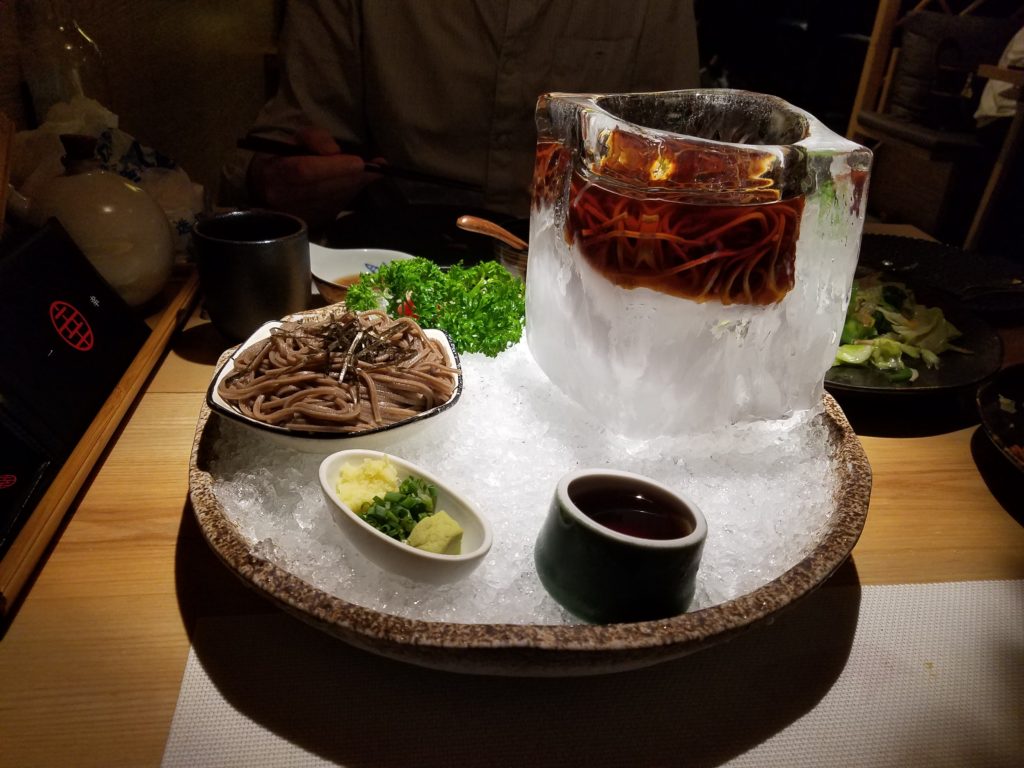
Overall, dinner was quite good, but a bit too high-end for me.
To wrap up the night, we met up with Prof. Lin again, who now took us to the private room of a tea shop in Sanfang Qixiang. While the shop seemed like a cramped little space from the outside, the staircase led to a second floor that was fully furnished with at least five tables for tea. Meanwhile, Prof. Lin was on the phone with the CEO to let him know we were crashing the place.
The store manager came out to brew tea for us personally, and as she brewed the jasmine tea (which came out wonderfully), Prof. Lin prompted me to ask any questions I had. Except, curiously, Prof. Lin was the one who answered my questions rather than the store manager. Either way, I got quite a bit of insight from it, mostly on how jasmine tea has been rebranding itself as a more “elegant” tea by improving the quality of both the leaves and the buds used.
While tea connoisseurs since the Song have praised unadulterated tea for its purity, jasmine tea is Fuzhou’s local specialty, and there’s definitely a push to make it seem like it’s for the upper class by using stories and connections to imperial and political figures, such as continuously mentioning that it’s Empress Dowager Cixi’s favorite tea, and that it was served to Henry Kissinger when he visited China.
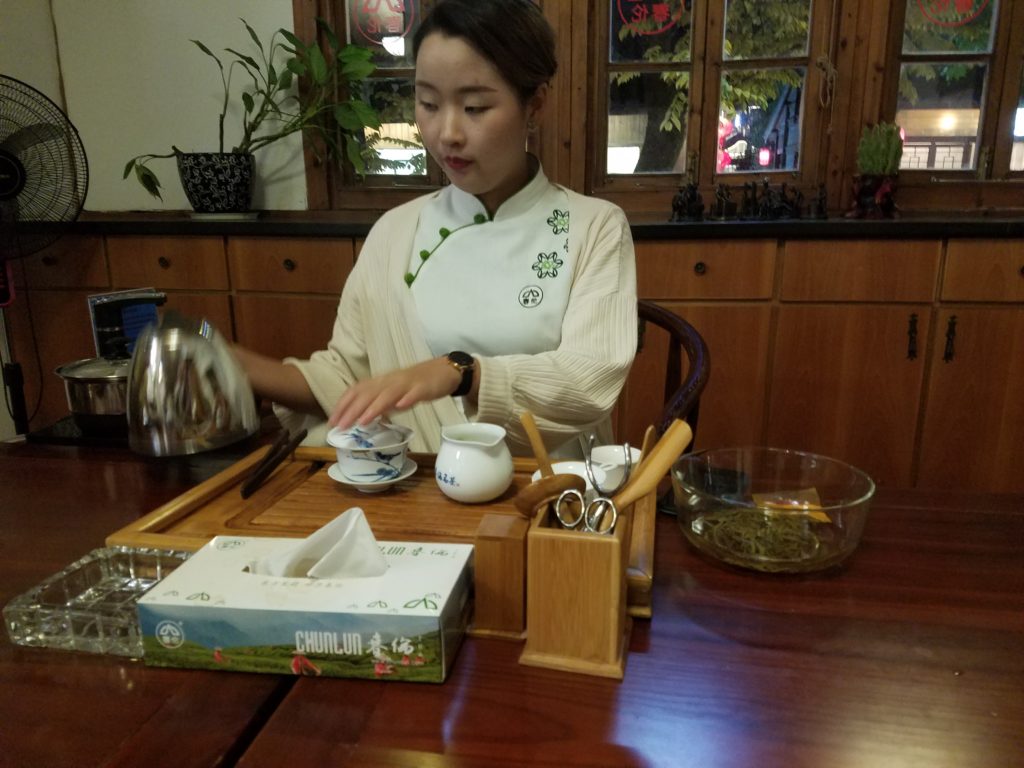
Ultimately, when we ended the night, I was absolutely exhausted. Having walked over 25,000 steps and nearly 20 km, I dreaded waking up at 7 am for guqin class the next morning. But I was happy I could meet up with my former professor, drink some delightful jasmine tea, and even bring some samples home with me for another day!

